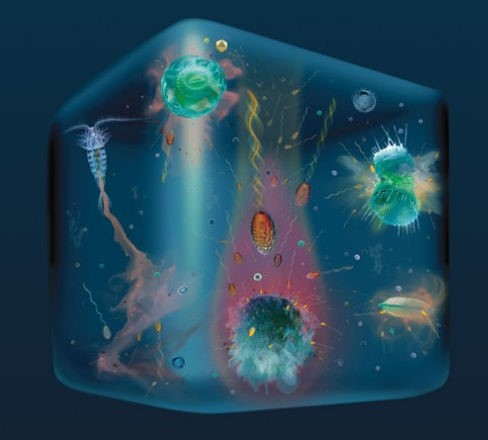Ecological interactions at the microscale
Written By
Category
Research
Posted On
May 1, 2012
Share This

The activities of marine microbial communities govern biogeochemical transformations and shape ecosystem functions. For example, microbial communities are the main decomposers of dissolved organic matter in the oceans, and therefore affect global phenomena, including biogeochemical cycles. However, the ecological principles governing interactions within marine microbial communities largely remain a black box in our models of such processes. We are currently developing new tools based on microfluidics and on the synthesis of artificial marine snow to recreate microenvironments in which we can precisely control conditions of nutrient availability and environmental conditions. By combining these tools with high-resolution microscopy, we are working to unravel the complexity of marine microbial communities, with regards to the spatial distributions and functional interactions of microbial populations and the effects on their microenvironment. For example, competition–dispersal trade-offs have been observed in marine bacterioplankton populations with very similar genomic compositions, resulting in two vastly different foraging behaviors to exploit nutrient particles, and thus a potential mechanism for coexistence. A number of projects in this area are underway in collaboration with other research groups from ETH Zurich, MIT and other US universities, supported by the Simons Foundation.
For more information, please contact Frédéric de Schaetzen (deschaetzen@ifu.baug.ethz.ch), Zachary Landry (landry@ifu.baug.ethz.ch) or Uria Alcolombri (alcolombri@ifu.baug.ethz.ch).